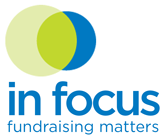Recent Posts
- The Secret Sauce: Strategies & Tactics to Engage Institutional Funders
- What Are Your Donors Saying When They Go Quiet? And How Should You Respond?
- Maximizing Year-End Giving: Strategies for a Successful Fundraising Campaign
- Navigating 2024’s Unique Year-End Fundraising Landscape
- Latest Giving USA Data
- How to Flex Your Case for Support to Raise More Money
- Maximizing Potential of Donor-Advised Funds: Strategies You Need To Know
- Major Donors: Cultivating Relationships & Forging Strong Ties
How Will You Improve Your Year-End?
By: Nadine Gabai-Botero, CFRE, President
August 2, 2022
How's your year-end planning coming? Even though it’s crazy hot outside, for fundraisers the countdown to winter and 2022 year-end is on.
While it may feel like you’ve got plenty of time to prep, August is the best time to get your end-of-year giving plan in place. Yes, we’ve said this before in different ways including posts last year on key year-end plan elements (still a great list!) and on messaging, mailing and matching gifts; and this piece by our colleague, Joan Geiger Wood, on 12 tips to ensure your year-end appeals are read from 2019.
What more can we add?
Year End Giving Campaigns
There’s always more! Because while the essential components of year-end may remain the same, the economic environment in which you’re fundraising, the ways in which you’re engaging donors, and even who is in your donor and prospect pool all are constantly in flux. How you respond to those and other elements, and how you share your organization’s impact, can make a big difference in your campaign’s effectiveness.
Remember, one third (30%) of annual giving occurs in December and 10% of all giving happens in the last three days of the year. (Source) This period from August - October should be all about planning and connecting with your donors and supporters.
Here are a few things to keep in mind as you create and refine your 2022 plans:
Economic Uncertainty is the Only Certainty.
The last few years have been a rollercoaster for us all, and the next few months may be even rougher, with inflation gaining steam and recession the new buzz word. While it’s unclear what the impact will be for year-end, it could mean some major donors who have been stalwart supporters might decide to hold off making their donations or give less. Be prepared for that potential by being meticulous about your donor stewardship this fall - make those calls! - and consider expanding your prospect list to connect with more lapsed donors. Having a deeper major donor prospect list could be just what you need.As for your grassroots supporters, core fundraising principles always apply, including staying focused on impact storytelling, using emotive language in appeals, being clear about why funds are needed, and making sure you convey urgency in your message. Why are funds needed now!?
Even with strong appeals, you may see some of your supporters take a pass if you don’t offer options like becoming a sustainer via a low monthly donation or even just suggesting they make a small, one-time gift. Study after study shows the importance of donor retention and the lifetime giving potential for individuals who make multiple gifts. Stay focused on keeping your donors as you weather the potential economic storm. (Source)
Timing is Everything.
When it comes to “year-end” make sure your solicitations start in November. That means letters are at the mailhouse by late October! If you’re mailing your appeal directly vs. using a mailhouse, make sure your timeline is firm.
Another key point on timing is that there is still critical time during August, September and October for you to reach out and engage your donors, many of whom may be making their biggest gift to you in November or December. Think about ways you can engage them that are directly linked to your mission. Consider planning an in-person or Zoom visit, a board-hosted house party, a small staff and volunteer group discussion on challenges, or even just send a personalized letter or make a call to share updates.
Segment & Personalize.
You know you’ve got to connect with your donors if you want to be effective at year-end (or, really, anytime when it comes to fundraising!) Here are some questions to consider as you plan:
- How will you segment your messages? Tailor content for:
- Current donors - new donors, multi-year donors who gave in 2022, and recurring donors; and
- Past donors including LYBUNTs (who gave Last Year But Unfortunately Not This year), SYBUNTs (who gave Some Years But Unfortunately Not This year), & your long-lapsed donors who haven’t given in more than 3 years.
- How are you engaging your major donors? These donors are important to your work in so many ways. And when you reach out to them, it’s got to feel special. Run your list of current and lapsed major donors and think through how and when you’ll connect with each person soon and in the fall. This is the time to be creative and donor-centric: what will your donor be interested in learning about? How was their gift used last year? Be ready to share!
- Who will get your direct mail appeal? Include mail if you have the budget and have addresses, and are looking to connect with your supporters via multiple channels. Mailed letters are a vital part of year-end giving, especially with older donors, and the combination of a letter arriving in November followed by a series of emails and social media posts highlighting your impact is powerful!
- How often will you email solicitations? There are many schools of thought on how many emails are too many or too few. Between November 29th (Giving Tuesday this year) and Sunday, Dec. 31st, there are 4 ½ weeks. During that time you should plan to send at least one email per week, with one the final week of the year and at least two on the 31st. And, don’t forget to email the first week of January! Many donors forget to give during the flurry year-end festivities and it’s helpful to share one last reminder.
Let me know how your planning is going, and if you want to brainstorm or engage our team in your year-end efforts, please reach out.


Pingback: How to Inflation-Proof Your Year-End Story - Focus Fundraising